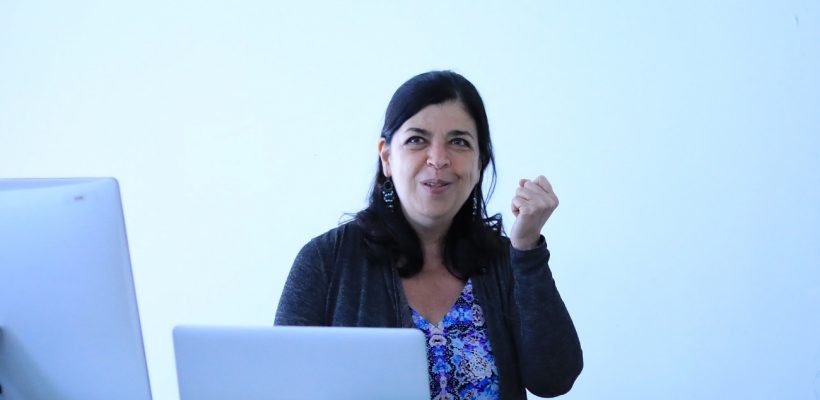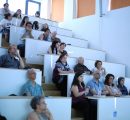
Book Presentation: Feast of Ashes: The Life and Art of David Ohannessian
2 min readYEREVAN, Armenia – On July 8, 2019, the American University of Armenia (AUA) hosted a book presentation by Sato Moughalian, author of “Feast of Ashes: The Life and Art of David Ohannessian.” Moughalian, a professional flutist based in New York City and artistic director of the Perspective Ensemble, was introduced to the attendees by AUA Visiting Assistant Professor Melissa Bilal.
This volume, published in April by Redwood Press, Stanford University Press, is a celebration of the centenary of one of Jerusalem’s most distinctive and popular arts – the brilliant glazed tiles and pottery known as Armenian ceramics throughout the world.
Founded by Moughalian’s grandfather David Ohannessian in 1919, this luminous artistic tradition has its origins in the fifteenth-century Ottoman Kütahya. In her book, the author masterfully illustrates the Armenian contribution to the development of the historic Anatolian ceramic center. She demonstrates illustrations of samples from the peak production of ceramic art in the early eighteenth century, when Kütahya’s Armenian artisans elaborately decorated ceramics, including the inscribed biblical tiles currently located in St. James Armenian Cathedral in Jerusalem.
The book tells Ohannessian’s story as he opened an atelier in Kütahya in 1907 and together with two other workshop owners – the Minassian brothers and Mehmet Emin – produced and exported ceramics, restored mosques in Constantinople, Damascus, Bursa, Mecca, and Cairo. Ohannessian was arrested and deported from Kütahya during the Armenian Genocide. In 1918 he was invited to Jerusalem by the new British Military Administration in Palestine to consult on the planned British restoration of the Dome of the Rock. Resettling there, he opened a workshop, trained young Armenians who were orphaned during the Genocide, marketed his wares locally and internationally, and carried over the Ottoman tradition of architectural tile embellishment to Jerusalem.
The attendees of the presentation had the opportunity to view illustrations of samples from several Armenian studios. Moughalian outlined the ways in which the studios have continued to advance this venerable art and forge new markets in Jerusalem and worldwide.
Moughalian’s richly illustrated book represents the first detailed attempt to trace the lineage of the Kütahya Armenian ceramic art and its re-establishment in Jerusalem in 1919. She documents the crucial role David Ohannessian’s deportation has played in the transition of the art, citing new discoveries from the Ottoman, as well as other archives in England, France, Jerusalem, and New York.
Founded in 1991, the American University of Armenia (AUA) is a private, independent university located in Yerevan, Armenia, affiliated with the University of California, and accredited by the WASC Senior College and University Commission in the United States. AUA provides local and international students with Western-style education through top-quality undergraduate, graduate, and certificate programs, promotes research and innovation, encourages civic engagement and community service, and fosters democratic values.








